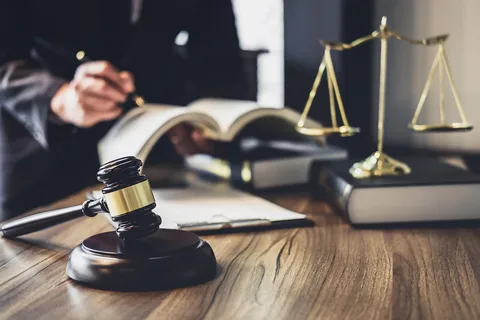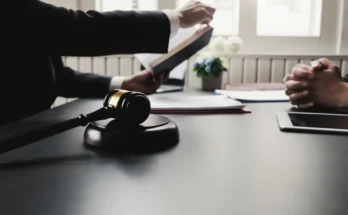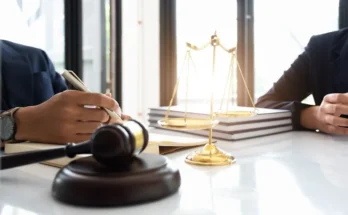The law is often viewed as something distant—courtrooms, judges in black robes, complicated language, and long documents filled with clauses. But in truth, law is all around us. It shapes how we live, how we interact, and what we expect from one another. It is the quiet structure that upholds fairness and accountability. Without it, societies would crumble into chaos and inequality would reign unchecked. What’s often overlooked, however, is how vital the law is not just as a system, but as a protector—for every gender, for every age, and for every human being.
Law isn’t just for lawyers and lawmakers. It is for children at school, women at work, elderly citizens at home, and men navigating public spaces. It protects the voiceless, defends the wronged, and limits the power of the powerful. Let’s explore how the law works as a guardian for people of every gender and age, and why its importance continues to grow in a complex, modern world.
The Law Toward Equal Protection:
For centuries, gender-based discrimination was woven into legal systems across the world. Women had fewer rights than men. Non-binary or transgender individuals were invisible in the legal realm. While progress has been made, the journey is far from over. Even today, gender bias exists in wage gaps, representation in leadership, and access to justice. But law is a living system—it evolves. And its role in addressing gender equality is foundational. Through legislation, policies, and court decisions, the law can either perpetuate discrimination or dismantle it. Thankfully, in many regions, the tide is turning in favor of equality.
Anti-discrimination laws ensure that individuals are not treated unfairly based on gender identity or sex. Equal pay legislation aims to close wage gaps. Family and domestic violence laws protect survivors, most of whom are women and girls, from abusive relationships. The law also allows space for recognition and protection of transgender and non-binary people through gender identity rights and legal name changes.
In workplaces, educational institutions, and public services, law is the shield that gives marginalized genders a fighting chance—not just to exist, but to thrive with dignity.
The Law and Age:
-
Safeguarding Childhood
Children are among the most vulnerable members of society. They rely on others for survival and are often unable to voice their needs or understand their rights. This is where child protection laws come in. These laws guarantee access to education, protect against child labor and abuse, and ensure health and development rights.
Juvenile justice systems also recognize that children should not be treated as adults in the eyes of the law. Rather than punishment, the focus is on rehabilitation, guidance, and the hope of a second chance.
-
Rights for Youth and Adolescents
As children grow into teenagers, their needs change—and so should the law’s approach. Young people begin to navigate more complex rights like consent, access to reproductive health, and educational freedom. Legal systems are gradually adapting to ensure that adolescents are informed and protected in these areas without being overly restricted.
The law serves as a bridge during this transitional phase of life, balancing autonomy with necessary boundaries.
-
Dignity in Old Age
At the other end of the age spectrum, elderly citizens require a different kind of protection. Elder abuse, neglect in care homes, and financial exploitation are real threats faced by aging populations. The law must ensure that the elderly have access to healthcare, pension rights, safety, and respectful treatment.
Ageism is a form of discrimination too, and legislation plays a key role in fighting it. From anti-discrimination policies in hiring to elder care standards, the law ensures that old age is not a sentence to invisibility but a stage of life that deserves respect and support.
Law as a Universal Language of Fairness:
-
Bridging Generational and Gender Gaps
Laws are not one-size-fits-all, but their purpose is universal: fairness. What makes the law powerful is its ability to consider the unique needs of people while still maintaining equality. A young girl, a middle-aged man, a non-binary teen, and an elderly woman—all are different, but all deserve justice. The law recognizes these differences while aiming for equity across the board.
By offering legal protections that account for age and gender, societies send a clear message: everyone matters. This not only strengthens individual rights but also builds trust in institutions.
-
The Role of Education and Awareness
A law is only as effective as the public’s understanding of it. Often, people don’t know their rights until those rights are violated. That’s why legal education is critical. Schools, workplaces, and public campaigns must work to raise awareness so that all people, regardless of gender or age, know how to access justice and support.
Knowledge of the law should be seen not as a privilege but as a basic tool for empowerment.
Challenges Ahead:
-
Bias in Legal Systems
While the law has immense potential, it is not always applied equally. Legal systems may still carry implicit biases—judges and police may have unconscious prejudices, or laws may be written without considering the full spectrum of human experience. This is why advocacy, reform, and active participation in democracy are essential.
The law is a tool, not a miracle. It must be wielded wisely and constantly refined to serve all people fairly.
-
The Role of Policy Makers and Citizens
Governments must continue to draft laws that are inclusive, transparent, and responsive. But they can’t do it alone. Citizens must stay informed, speak up, and vote. The more diverse voices involved in legal discussions, the more just the outcome.
Real-World Impact:
Consider the example of gender-based violence laws that allow survivors to seek protection orders or safe housing. Or elder abuse hotlines that exist because the law mandates such services. Or school systems where children cannot be expelled unfairly due to their socio-economic status or gender identity. These are not theoretical examples—they are everyday outcomes of a functioning legal system that sees people as more than statistics.
The real value of law is felt not in the courtroom but in daily life—when a girl goes to school without fear, when an elderly man gets the healthcare he needs, or when a young queer person changes their legal gender marker without humiliation or rejection.
Conclusion:
The law is not a luxury of the elite or a weapon of the powerful. At its best, it is a guardian of the common person—irrespective of gender, age, background, or status. It evolves with society, it speaks for the voiceless, and it acts when wrongs must be righted.
Whether you’re a child finding your place, a woman claiming your rights, a non-binary individual seeking recognition, or an elder demanding dignity—the law should be your ally. And it’s up to all of us to ensure it remains so. Because in a truly just world, the scales of justice never tip based on who you are—they balance based on what is right.




